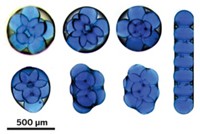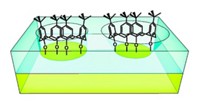Advertisement
Grab your lab coat. Let's get started
Welcome!
Welcome!
Create an account below to get 6 C&EN articles per month, receive newsletters and more - all free.
It seems this is your first time logging in online. Please enter the following information to continue.
As an ACS member you automatically get access to this site. All we need is few more details to create your reading experience.
Not you? Sign in with a different account.
Not you? Sign in with a different account.
ERROR 1
ERROR 1
ERROR 2
ERROR 2
ERROR 2
ERROR 2
ERROR 2
Password and Confirm password must match.
If you have an ACS member number, please enter it here so we can link this account to your membership. (optional)
ERROR 2
ACS values your privacy. By submitting your information, you are gaining access to C&EN and subscribing to our weekly newsletter. We use the information you provide to make your reading experience better, and we will never sell your data to third party members.
Materials
Lattice disassembles into nanoparticles
January 22, 2007
| A version of this story appeared in
Volume 85, Issue 4
Mesoporous silica nanoparticles are potentially useful for drug delivery, enzyme encapsulation, and other applications. When grown by self-assembly, they tend to aggregate, and it is difficult to control the size and shape of aggregated particles. Andreas Stein and his coworkers at the University of Minnesota, Minneapolis, have now shown that the problem can be overcome by preparing the nanoparticles by disassembly of a macroporous silica lattice (Angew. Chem. Int. Ed., DOI: 10.1002/anie.200604147). This structure is constructed by adding a mixture of surfactant, oxalic acid, and tetraethyl orthosilicate to a colloidal crystal template of poly(methyl methacrylate) spheres. The mixture fills the tetrahedral and octahedral spaces between the spheres and hardens into a solid gel. After the polymer template and surfactant are removed by heating, the silicate gel slowly changes into a silica skeleton that breaks down into discrete mesoporous nanoparticles. The particles gradually develop into cubic and spheroidal shapes to minimize their surface-to-volume ratios. The authors suggest that the nanoparticles-through-disassembly technique could be extended to other 3-D macroporous materials.





Join the conversation
Contact the reporter
Submit a Letter to the Editor for publication
Engage with us on Twitter